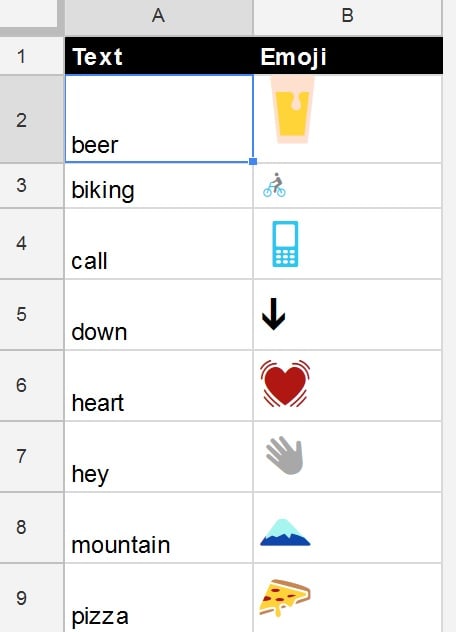

Same as replaceShortcodesWith, but operates only on unicode emojis that are recognized. converterInstance.replaceUnicodeWith(str, replacer) emojiObject is the original emoji object from the source provided in the constructor. The function is called with (unicodeCharacter, shortcode, emojiName, emojiObject). Replace :shortcode:s with unicode emojis in a string converterInstance.replaceShortcodesWith(str, replacer)Įvery :shortcode: emoji that you have defined in your sources will be replaced with the function you specify. Replace unicode emoji in a string with :shortcode:s. The Converter Instance converterInstance.replaceUnicode(str) Sources are applied from left to right (rightmost source has most priority). You can also provide any other options you want to these objects and they will be available to a custom replacer.

Each should have at least a shortname (needs to be surrounded with colons), optionally a name, optionally a unicode (the actual unicode character), and optionally a shortname_alternates (an array of alternate shortnames, each surrouned with colons). You can specify different sources.Ī source should be an array of objects, each object representing an emoji. The default constructor initializes it with the official Unicode emojis. This package exposes one class, Converter. Supports custom emoji for any unicode sequence and/or shortcode. You can do this as many times as you wish.Īll uploaded data is deleted after 1 hour.Convert to and from actual emoji (💖), short codes ( :pizza:), and to arbitrary formats. You can then upload the master file again and re-compress it. This keeps your data private and secure.Īlso, if you are unhappy with our compression output, you’ll still have your original files. Also, the server automatically purges all data after 60 minutes, so anything you upload will be deleted just an hour later. The server that operates the tool is fully automated, so no one sees the images you upload. Our compression tool is not only easy to use but completely safe. Remember that you can only do batches of 20 images at the most, but you can upload as many batches as you like. If you’re ready to perform another conversion, hit the “CLEAR QUEUE” button and start the process again. That file will contain all your compressed PNGs in one convenient package. When everything is all done, you can save some time by hitting the “DOWNLOAD ALL” button. When satisfied, hit the “APPLY” button and move on to the next image. Move the quality slider until you have found the ideal ratio of compression to file fidelity.
#PNG TO EMOJI CONVERTER MANUAL#
Tap the thumbnail of one of your images to launch the manual mode. If you want to manually control the compression level, that is also an option. If you’re happy with what our server chooses, you can simply grab the compressed file(s) by hitting the “DOWNLOAD” button under the thumbnails. Our server will immediately process them and determine the appropriate ratio for quality compression. Once uploaded, you’ll see thumbnails for your PNGs in the queue. However, if you’re on a mobile device, you can also tap the “UPLOAD FILES” button and navigate to your PNGs that way. The easiest way to do this is to simply drag and drop your images onto the “Drop Your Files Here” field. The first thing you’ll need to do is upload one or up to 20 PNG files.
#PNG TO EMOJI CONVERTER SOFTWARE#
There’s no software to download, no need to register, and no limit to the number of compressions you can do.
#PNG TO EMOJI CONVERTER FREE#
How can you compress a PNG?Ĭompressing a PNG is incredibly simple using our free online tool. If you have a lot of PNGs on your page, compressing them to 8-bit could drastically improve your website’s speeds. Now you have a smaller file taking up less space in storage and your page will load slightly faster. Converting that image to an 8-bit palette will reduce the file size without affecting its visible quality. If your website has a simple logo that is a 24-bit PNG, that file is taking up unnecessary space and slowing down your page load time.

The higher the bit support, the more available colors there are for that PNG - and the larger the file size. PNGs support either 24-bit or 8-bit colors. This is something not possible with many other image formats, including JPG. This allows you to place a PNG on top of another image and only cover specific parts of the image underneath. PNGs are ideal for graphics, logos, and other simple designs because they support transparency. The tool on this page conducts a type of lossy compression by reducing the available color palette of a PNG. On the other hand, if you remove bits that lower the quality of the file, this is known as lossy compression. Sometimes you’re removing empty or useless bits of information so the file reduces in size but it appears exactly the same. In relation to digital files, compression is the act of taking one file and making it smaller by removing bits of information.


 0 kommentar(er)
0 kommentar(er)
